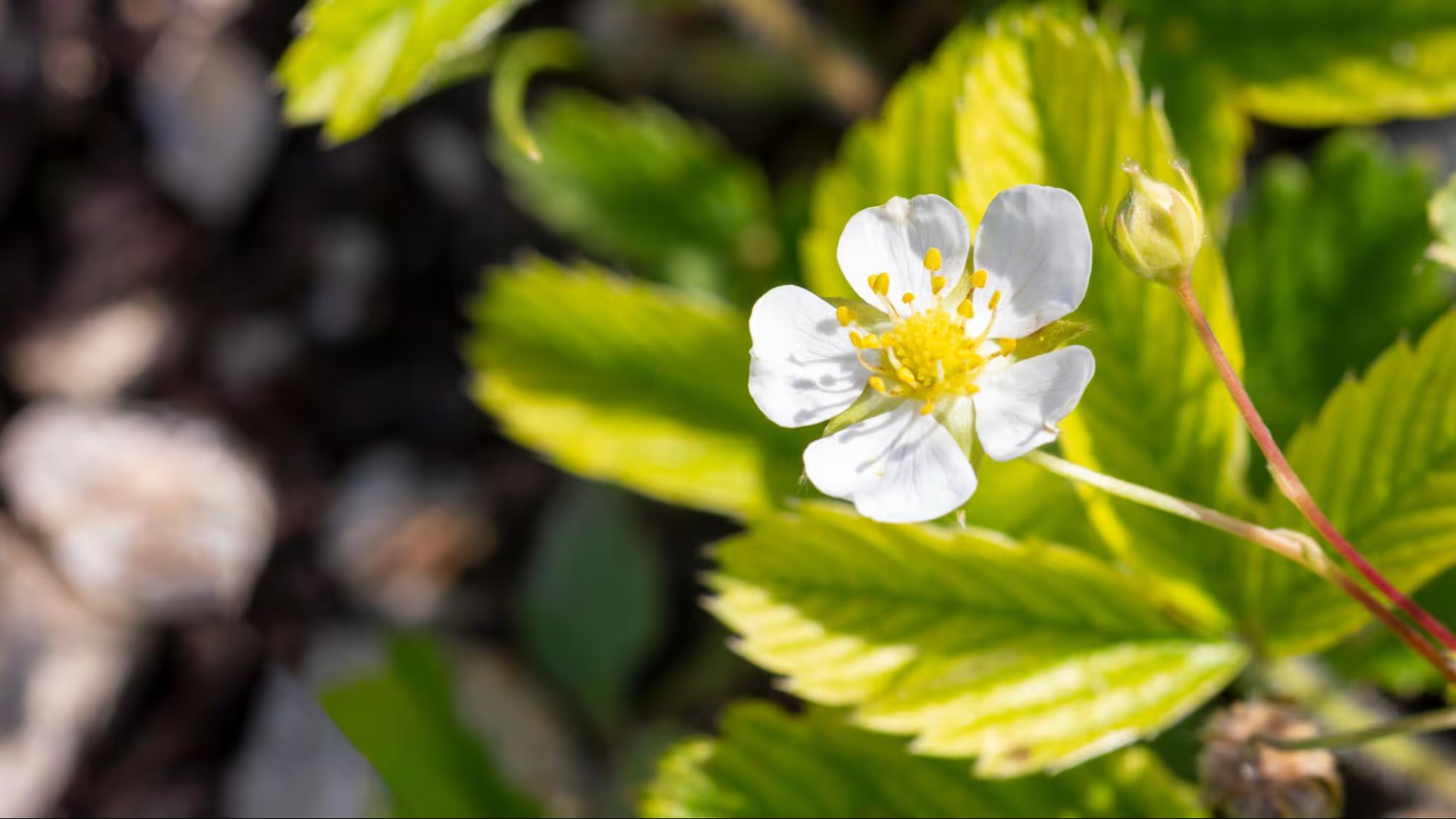
Flowering is one of the most important stages in the development of strawberries, as fruits form directly from the flowers. Whether grown in a garden, greenhouse, or even on a balcony, understanding this process can significantly contribute to higher yields and better fruit quality. Like all plants, strawberries go through different growth phases, but flowering marks a crucial turning point that directly affects the quantity and characteristics of the future fruit.
Strawberries are perennial plants that typically bloom in the spring, most often from April to May, depending on climate conditions and variety. Moderate temperatures and ample sunlight encourage the development of flowers, which signal the beginning of fruit formation.
Based on flowering time, strawberries are divided into three main groups:
It’s important to note that the flowering process is closely linked to the plant’s previous winter dormancy phase. Strawberry plants that have been exposed to enough cold days—a process known as vernalization—enter the flowering stage earlier and more successfully, which directly influences the quality and abundance of the harvest.
Strawberry flowers are typically white, with five delicate petals and prominent yellow stamens in the center. They grow on upright flower stems that emerge from the center of the plant’s rosette and mark the beginning of fruit development. Each flower has the potential to produce a single fruit, so the number of flowers directly affects the final yield.
Interestingly, strawberry fruits do not develop from the ovary like in most other plants, but from the enlarged receptacle of the flower. The tiny specks on the surface of a ripe strawberry, known as achenes, are actually the real fruits in botanical terms. The red, fleshy part that we eat is an enlarged portion of the flower base. This unique characteristic makes the strawberry distinctive not only in flavor and appearance but also in its method of fruit development.
To ensure abundant flowering and high-quality fruit, strawberries require specific growing conditions:
To maximize yield and maintain fruit quality, it is essential to give special attention to the plant during its flowering phase. Key care tips include:
Flowering represents a vital stage in the life cycle of strawberries and has a direct impact on fruit quality and yield. Understanding this phase and meeting the plant’s needs during flowering is essential for anyone aiming to grow healthy, flavorful strawberries. Proper care, optimal environmental conditions, and consistent monitoring throughout the flowering period not only improve harvest outcomes but also contribute to the long-term vitality of the plants. Whether grown at home or on a larger scale, the attention devoted to flowering pays off with visible and rewarding results.